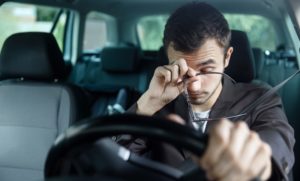
FACTS
- Fatigue decreases our ability to think clearly and remain attentive and vigilant. Drivers who are tired or fatigued are much more likely to make critical errors resulting in crashes.
- There is no test to determine sleepiness as there is for intoxication, i.e. a “Breathalyzer”.
- State reporting practices are inconsistent. There is little or no police training in identifying drowsiness as a crash factor. Every state currently addresses fatigue and/or sleepiness in some way in their crash report forms.
- Self-reporting is unreliable.
- Sleep related crashes are most common in young people, especially men, adults with children and shift workers.
- Sleep deprivation increases the risk of a sleep-related crash; the less people sleep, the greater the risk.
- Research indicates commercial drivers and people with undiagnosed sleep disorders such as sleep apnea and acute insomnia are also at greater risk for fall asleep crashes.
- Sleep deprivation and fatigue make lapses of attention more likely to occur, and may play a role in behavior that can lead to crashes attributed to other causes.
STATS
- More than half of U.S. adult drivers admit to consistently getting behind the wheel while feeling drowsy.
- About 37% admit to falling asleep behind the wheel, while 13% admit to falling asleep behind the wheel in the past month.
- Losing even two hours of sleep is similar to the effect of having three beers.
- The crash risk for driving on 4-5 hours of sleep is more than 4 times higher than someone who has slept 7 hours, which is the same crash risk as a drunk driver with a 0.08 alcohol concentration.
- Twenty-one percent of fatal crashes involve a drowsy driver.
- More than 6,400 fatal drowsy-driving crashes occur annually.
- People are three times more likely to be in a car crash if they are tired.
- Drowsy driving killed 795 lives in 2017.
